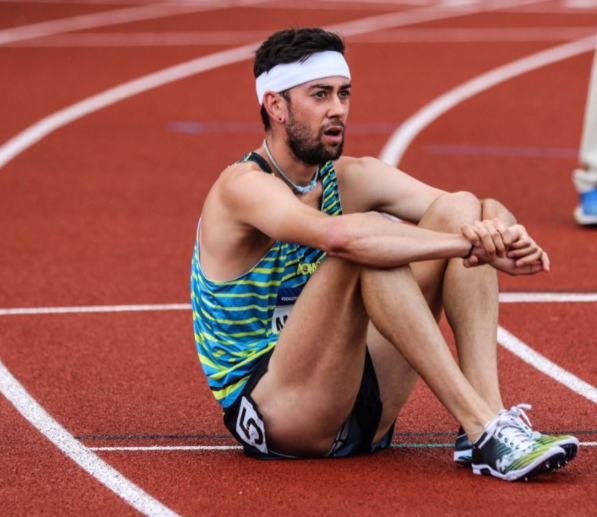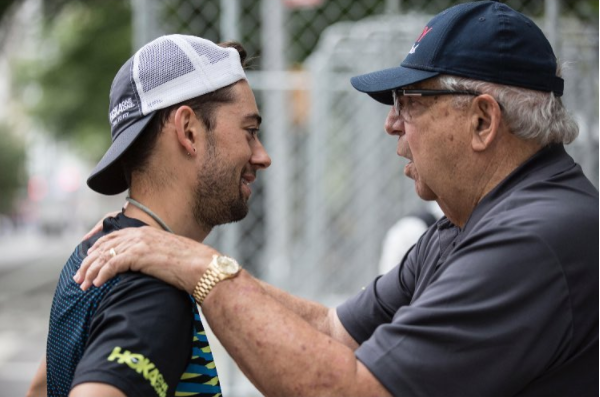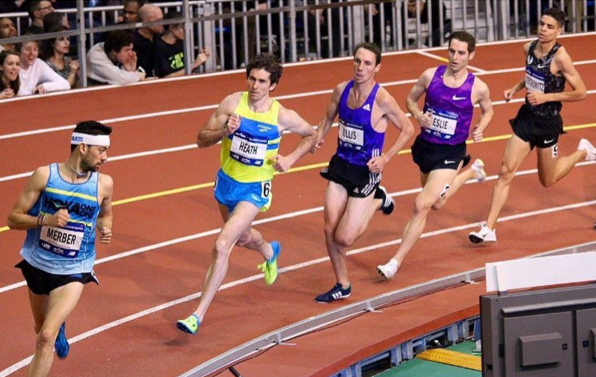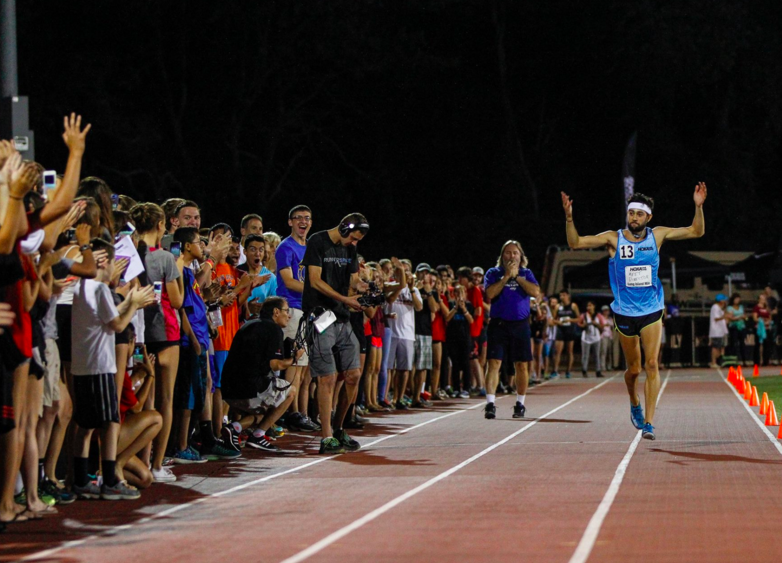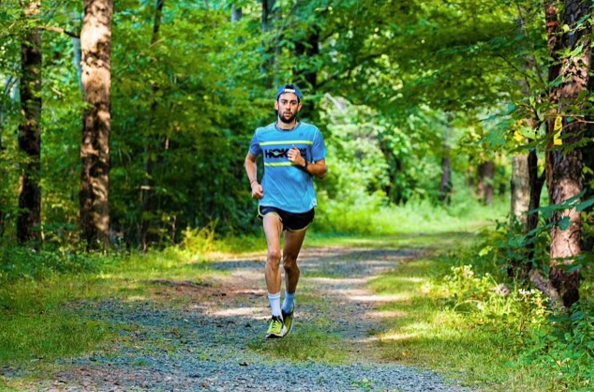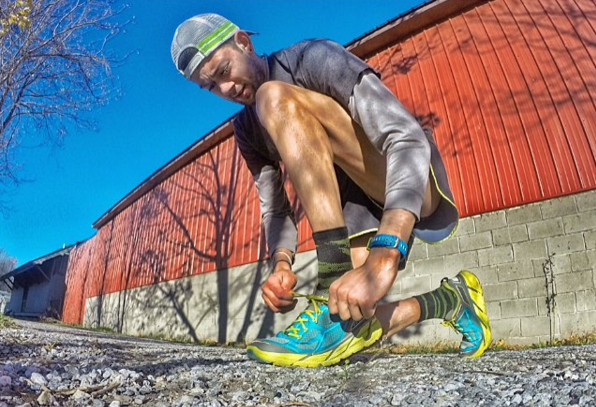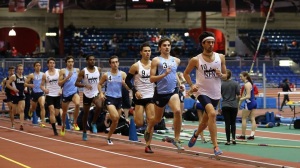
Introduction by Paul Snyder
As a country, notions of “otherness” and competition define our political and economic systems. So it’s really no surprise that as a culture, we love rivalries. We quiver with delight at the thought of two high-profile titans duking it out, challenging one another to be better, with the outcome a performance that is greater than the sum of its already great parts.
Frazier-Ali. Hamilton-Burr. Harding-Kerrigan. David-Goliath. Aguilera-Spears. Magic-Bird.
Stories of these deeply personal, yet publicly-contested battles captivate our imaginations more than almost any other trope out there. But to suggest that the only rivalries worth their salt are the ones we see on television or read about in magazines is irresponsible.
(Consider this. Magic Johnson and Larry Bird squared off dozens of times during their illustrious NBA careers, each matchup a must-watch event. But at the end of the day, win or lose, both Bird and Johnson would walk out of the locker room, dejected, but still millionaires with legions of adoring fans. Celebrity rivalries enthrall us, but we forget that they rarely result in one party “losing it all.”)
The same doesn’t hold true for the thousands of just-as-hotly-contested rivalries that smolder in obscurity, lacking in infamy but certainly not in passion. In these rivalries, there is no glory, no fortune to fall back on. Simply victory or defeat, and an abundance of tears either way.
I invite you take a hard stand in a generally under-acknowledged sibling rivalry that is coming to a head at the 2016 Detroit Free Press Marathon, on Sunday, October 16. The combatants? Brothers Will and Liam Boylan-Pett, natives of nearby Bath, Michigan, who both went on to compete for Columbia University’s track and cross country teams. (They’re also raising money for a neat cause, so donate if you’d like!)
On paper, this shouldn’t be close. Liam is a sub-4 miler many times over and enjoyed a professional running career that saw him compete at the 2012 Olympic Trials. He only recently retired, and ought to retain much of the residual fitness from his competitive days. If the ability to run fast was how we predicted race winners, Liam would be a lock.
But we don’t run the marathon on paper, folks, and that’s why this promises to be something special, brutal, and permanently damaging to the brothers’ relationship.
Will is several years Liam’s senior, and used his advanced age to wallop Liam in high school track races. (Liam has only beaten Will a handful of times, an important but very misleading statistic worth considering.) Where Liam floats over the ground with an effortless loping stride, Will does not. He huffs, puffs, and generally seems to be near vomitus, regardless of pace or distance. But the guy is well-versed in dealing with the discomfort that comes with racing the marathon distance.
Familial pride is on the line. But the real motivation stems from the side bet. The loser must: put a “26.2” bumper sticker on their car; listen to the worst band imaginable exclusively (the Eagles?), for one month; carry a yoga mat with them everywhere they go for one month; and eat the fat leftover from the winner’s steak, at a dinner hosted in the loser’s apartment.
These two men are ready to bleed on race day. It’s Boylan-Pett-Boylan-Pett. We checked in with prominent representatives from each camp, both uniquely qualified to offer their highly subjective opinions on the Duel for Detroit.
Why I am team #TeamLiam
by Johnny Gregorek
Over the past few months I have made it perfectly clear that I’ll be supporting Liam Boylan-Pett, more iconically known as LBP, in the upcoming brotherly battle of the Detroit “Free the People” Marathon. For those of you who don’t know, Will BP is a former coach of mine, a dear friend, and a mentor. However, it is laughable to think he has any shot at beating Liam. Believe me. I know from experience.
In 2013(?) I watched a similar battle take place at Columbia university. The match-up was Elliot Blount (1:46 800m guy) vs Will BP (multiple hot dog a week guy) over 600 meters. Will had been running a lot of speed work with the team and many thought he could take down Blount, who does occasional push-ups and is talented. Long story short, the gun goes off and Blount puts about 50 meters on Will over the course of the first 75 meters. Will was completely all out, and the more talented guy just laughed and made him look like an idiot. I made a promise to myself that day. For the rest of my life, I would never support Will in anything ever again.
So, here we are on the verge of yet another battle between Will and a guy who is 110% better at running. His own brother. This time the stakes are higher, but it’s going to be the same old story. I’ve never been more sure about anything in my life. Let’s talk stats here, shall we?
This is Liam’s debut marathon. Everyone knows that ignorance is bliss. Will, on the other hand, has dropped out of multiple marathons. Fact.
Liam has kept his cool under tremendous pressure on multiple occasions. He led the charge in building a national caliber distance program at Columbia, which lasts to this day. He has broken four for the mile, run in the Olympic Trials, anchored a Penn Relay 4×800 victory, the list goes on and on. Meanwhile, Will has no such resume. He went to “law school” and pushes papers at some glue factory in Northern Connecticut. How can this race even be up for debate?
I know what EVERYONES rationale for a Will victory is. He is tough. He is relentless. When his body screams for mercy on his daily 20 min jog/elliptigo ride, he answers with a violent head swivel, grunts “this is a disaster” and surges onward. Do I respect that? You bet. Will it help him at all against a specimen like Liam? No chance.
Liam is Alec Baldwin and Will is one of the other Baldwins.
Liam is Michael Jordan. Will is Larry Jordan (just found out he existed on Wikipedia).
Liam is Polar Grapefruit Seltzer. Will is terrible.
I interviewed Will’s entire family on this matter and they all broke down laughing when I asked if they believe in him. They know better. They support their hero child. Liam “The Jet” Boylan-Pett. The colossus of clout. The sultan of stride. Father of dunks. First of his name.
The guy has been destroying his training and is ready for a monster performance. Ask yourself, am I going to stand on the wrong side of history?
Will is a Trump Supporter
Why I am the self-proclaimed ‘Captain’ of #TeamWill
by Kyle Merber
I first got to know Will during the middle of my sophomore year when he suddenly became our assistant coach at Columbia. Despite having a newly minted law degree, he couldn’t get a job. And unlike most people who were now greatly in debt and dependent on a gambling habit, Will refused to keep applying to jobs. Instead he accepted an offer [probably at a bar, thrown out as a joke] by his former coach despite having no prior experience aside from middle school cross-country and being a former mediocre runner himself. He didn’t contribute a whole lot at first aside from being the guy who laid the cones down, but the team took a liking to him.
During the three years we overlapped at Columbia, I would say he could best be described as the ‘workout bitch.’ If someone had to run alone, he’d hop in and help out. This precedent was first set by his “way too good for him and much more famous” professional runner girlfriend, Delilah, who would regularly employ him to block the wind for her. He rarely ever complained, except the one time that he did and it ended with a temporary break up during a hill-repeat session on the north side of the park. And many say that was the last time Will has ever complained about anything.
To a lot of people, they are seeing the Detroit Marathon as a 26.2-mile war. But Will has been battling his whole life. Blessed with absolutely no genetic gifts whatsoever, he has had to fight tooth and nail for everything. Unlike Liam who simply had to follow in the footsteps of his role model that lived down the hall, Will forged his own trail.
Look, I know what people are saying about Will’s “drinking problem” and “the extra 15 lbs. he could definitely afford to lose,” but they’re looking at this thing the wrong way. Will has 7 different 20+ mile long runs and I can guarantee you that he did not get more than 5 hours of sleep before any one of those, and the only water he consumed in the hours leading in could best be described as chewing on ”the rocks.” But if we can somehow manage to put Will to bed at a reasonable hour the night prior and hide all the Detroit City Distillery liquors (he is part owner), it will be like taking off the donut before a ballplayer gets up to bat.
I once did a tempo run on a cold day in Central Park and I guilt-tripped Will into joining me. I dropped him HARD 1.5 miles in, but he kept trying to catch up for another half mile before quitting. Except he didn’t…3 miles later and out pops Will from the bushes to help for another 2-minutes before once again fading. I tried going through my running log to find a single tempo I have ever done with Liam to use as an example of his lack of spirit, but I couldn’t. Because he never stepped up to the plate to try and tempo with the big boys. Instead he would run with his girlfriend “Ashley” who has been Yoko Ono’ing him this whole buildup and has somehow convinced him that this race will be won in 2:40 (probably because she thinks she could beat them both).
Will is going to PR and I dare Liam to try and go with him. Because if there is one thing I know, it’s that Will knows what it’s like to feel and look like complete shit.
This is a man who has nothing going for him (unlike Liam, who is faster, smarter and better looking). Will’s whole life has been filled with loss after loss. He’s a loser. This race is all Will has. And that’s why I think he may finally win.
P.S.-Liam is writing in Ted Cruz
